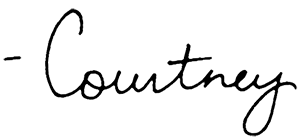With COVID-infection rates dropping, associations and organizations are starting to gather together again at conferences. As your group starts to consider future events, should you hire an industry-specific speaker to keynote your conference, or an external speaker who doesn’t work in your industry?
There are pros and cons to both choices. (you knew I was going to say that, didn’t you?)
If you choose an industry-specific keynote speaker, you’ll likely be working with someone you already know. They may even already be planning to come to your conference anyway!
Pros of choosing an industry-specific keynote speaker:
- Relevant knowledge of industry keywords, acronyms, and issues
- Case-studies from only organizations in the industry
- The possibility of saving money, as many association members will present pro bono for organizations of which they are a member
If your organization and industry are in a stable position with very little change on the horizon, selecting a member of your group to deliver the keynote speech could be a smart decision.
But…
If your field has been facing uncertainty (like almost all fields have in the wake of COVID), it’s smart to consider bringing in someone from outside of your industry. Research shows that input from diverse fields helps increase creative problem-solving abilities. Diverse experiences and opinions leads to thought-provoking conversation and innovative ideas. When everyone at the table shares the same background, our choices and options can tend to stay close to status quo.
In order to break out of the rut of “the way we’ve always done things,” we need to gather ideas from people outside of our own industries.
Additionally, people are getting excited to come back to live events. They don’t want to see what they’ve seen dozens of times before. They want energy and interaction and excitement.
So…
The Pros of choosing an external speaker in 2021:
- Your industry needs an outside perspective.
- “The way we’ve always done it” is becoming obsolete, and you need to underscore that with a fresh voice
- External speakers are professionals at crafting a participative (but safe!) experience that will bring the energy your people are craving
- If your event will be hybrid, an external speaker will have the ability to engage both the in-person audience and the home audience at the same time, so no one will feel left out of the experience
For your post-COVID conferences, you’ll have lots of options (isn’t that a great feeling, after the year+ we’ve had?) To keep your attendees engaged and ready to move forward, consider a blend of industry-specific speakers and professional keynote speakers.










